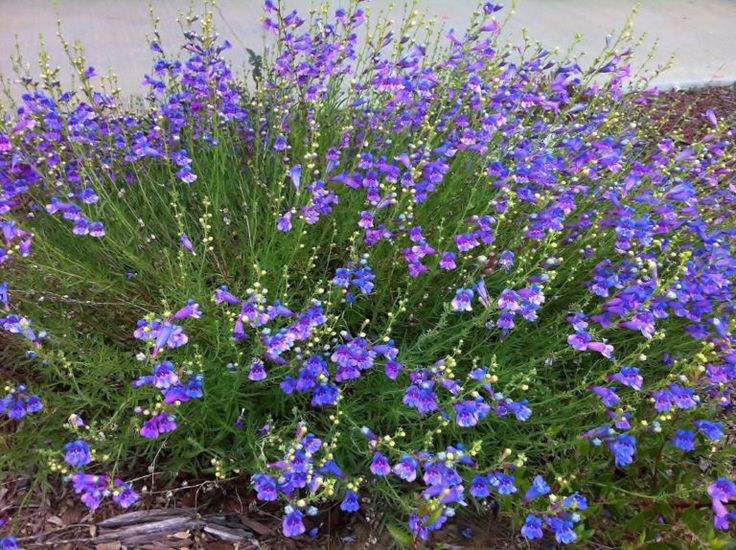Penstemon heterophyllus ‘Margarita BOP’

Penstemon heterophyllus ‘Margarita BOP’, commonly known as Margarita BOP Foothill Penstemon, is a stunning perennial herbaceous plant celebrated for its vibrant blue-purple flowers and attractive foliage.
Native to California and other western regions of North America, Margarita BOP adds a splash of color and elegance to gardens, meadows, and natural landscapes.
In this comprehensive article, we will delve into the botanical intricacies, habitat preferences, life cycle, ecological and cultural importance, conservation status, and care guidelines for Penstemon heterophyllus ‘Margarita BOP’.
Botanical Description
Margarita BOP Foothill Penstemon is a member of the plantain family (Plantaginaceae) and typically grows to heights of 1 to 2 feet.
It features erect stems lined with lance-shaped leaves that vary in size and color, ranging from deep green to gray-green.
The foliage provides an attractive backdrop for the striking flowers, which appear in dense spikes at the tips of the stems.
The tubular-shaped flowers of Margarita BOP are a vibrant blue-purple hue, with contrasting white throats adorned with intricate purple veining.
Flowering occurs in late spring to early summer, attracting bees, butterflies, and hummingbirds with their nectar-rich blooms.
Habitat and Distribution
Margarita BOP Foothill Penstemon is native to a variety of habitats, including chaparral, coastal sage scrub, oak woodlands, and grasslands.
It is found throughout California and extends into other western states such as Oregon, Nevada, and Arizona.
Margarita BOP thrives in open, sunny locations with well-drained soil, although it can tolerate some shade and a range of soil types.
It is often found growing on slopes, hillsides, and in meadows, where it adds a vibrant pop of color to the landscape.
Life Cycle and Phenology
As a perennial herbaceous plant, Margarita BOP Foothill Penstemon exhibits a relatively short life cycle compared to woody shrubs and trees.
Growth typically occurs in late winter to early spring, with new shoots emerging from the base of the plant and existing stems elongating.
Flowering peaks in late spring to early summer, depending on local climate conditions, with individual flowers lasting several weeks.
After flowering, Margarita BOP may produce small, capsule-like fruits containing numerous tiny seeds.
These seeds are dispersed by wind, water, and animals, contributing to the plant's reproductive success and dispersal.
Ecological and Cultural Importance
Margarita BOP Foothill Penstemon plays a valuable ecological role in its native habitat, providing food and habitat for a variety of wildlife species.
The flowers are a valuable nectar source for bees, butterflies, and hummingbirds, supporting pollinator populations and promoting biodiversity.
Additionally, the foliage provides cover and nesting sites for small mammals, birds, and insects. Culturally, Penstemons have been admired for their delicate beauty and used in native plant landscaping, wildflower gardens, and naturalistic landscapes.
Their graceful appearance and low-maintenance nature make them a popular choice for gardens and landscapes throughout their native range.
Caring for Penstemon heterophyllus ‘Margarita BOP’
Sunlight
Plant Margarita BOP Foothill Penstemon in a location that receives full sunlight to partial shade, as it prefers abundant sunlight for optimal growth and flowering.
Watering
Water young plants regularly during the first growing season to establish a strong root system. Once established, Margarita BOP is drought tolerant and generally requires minimal irrigation. Water deeply during prolonged dry spells, especially in inland areas.
Soil
Plant in well-drained, sandy or loamy soil with good drainage.
Margarita BOP is adaptable to a variety of soil types but prefers soil with good drainage. Avoid heavy clay soils, which can cause root rot and other problems.
Pruning
Margarita BOP Foothill Penstemon does not require pruning except to remove spent flower spikes or to tidy up the plant's appearance. Cut back the foliage to the ground in late fall or early winter to promote fresh growth in spring.
Fertilizing
Margarita BOP generally does not require fertilization, especially in nutrient-rich soils.
If desired, apply a balanced fertilizer in spring, following the manufacturer's instructions.
Mulching
Apply a layer of organic mulch around the base of the plant to help retain moisture, suppress weeds, and insulate the roots from temperature fluctuations.
Avoid placing mulch directly against the stem to prevent rot and fungal diseases.
Following these care guidelines enables cultivating vibrant Margarita BOP Foothill Penstemon, enhancing landscapes and conserving native plants' beauty and ecology.
Leave a Reply
You must be logged in to post a comment.